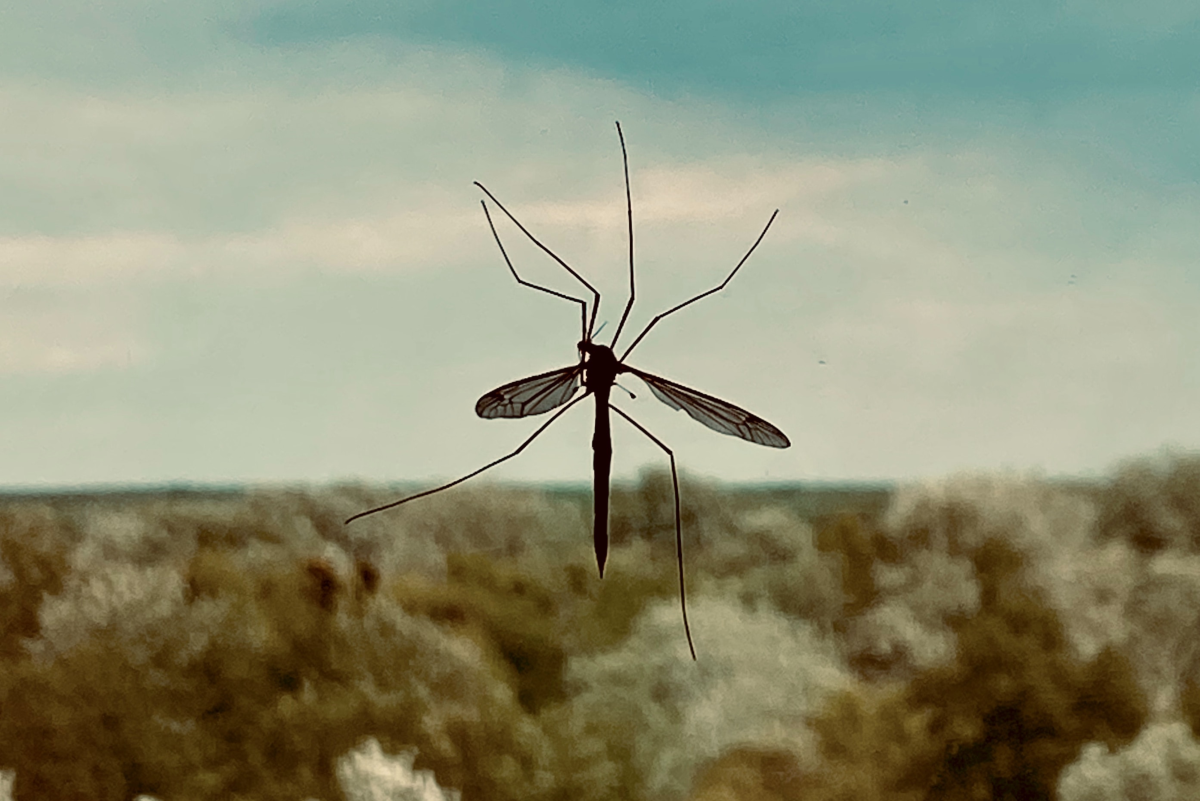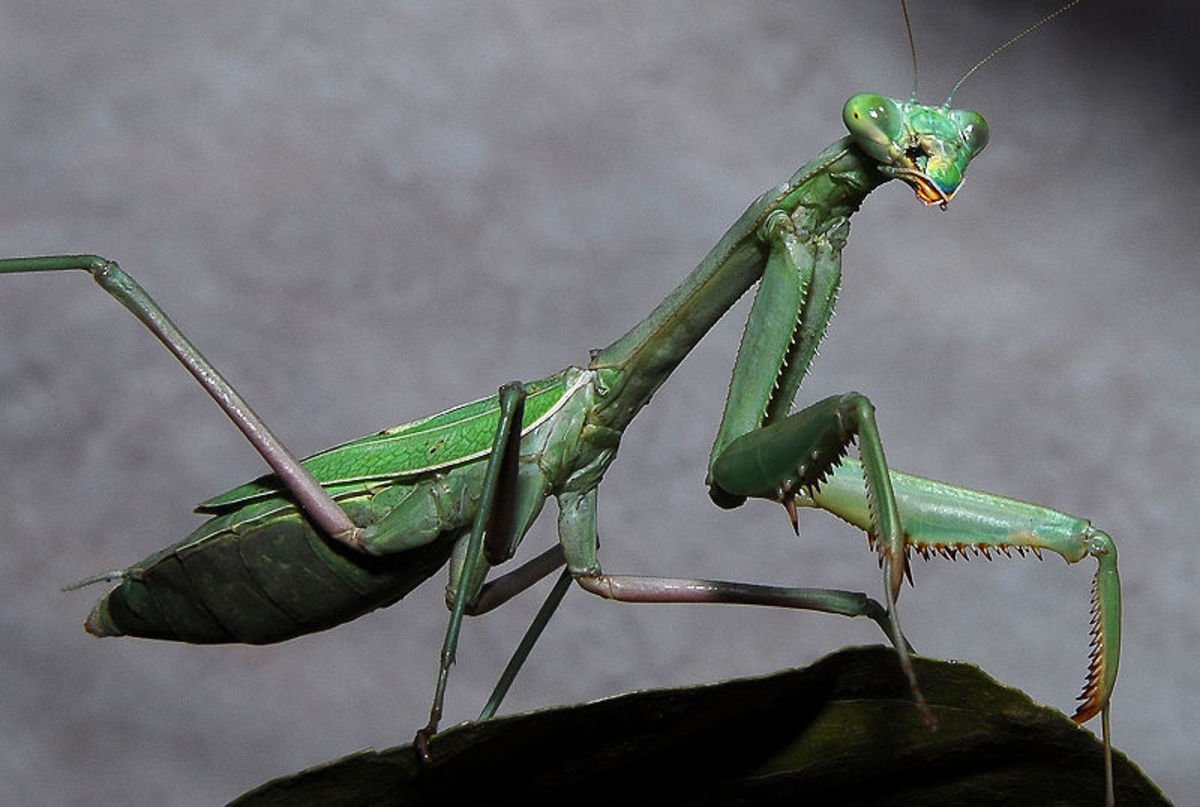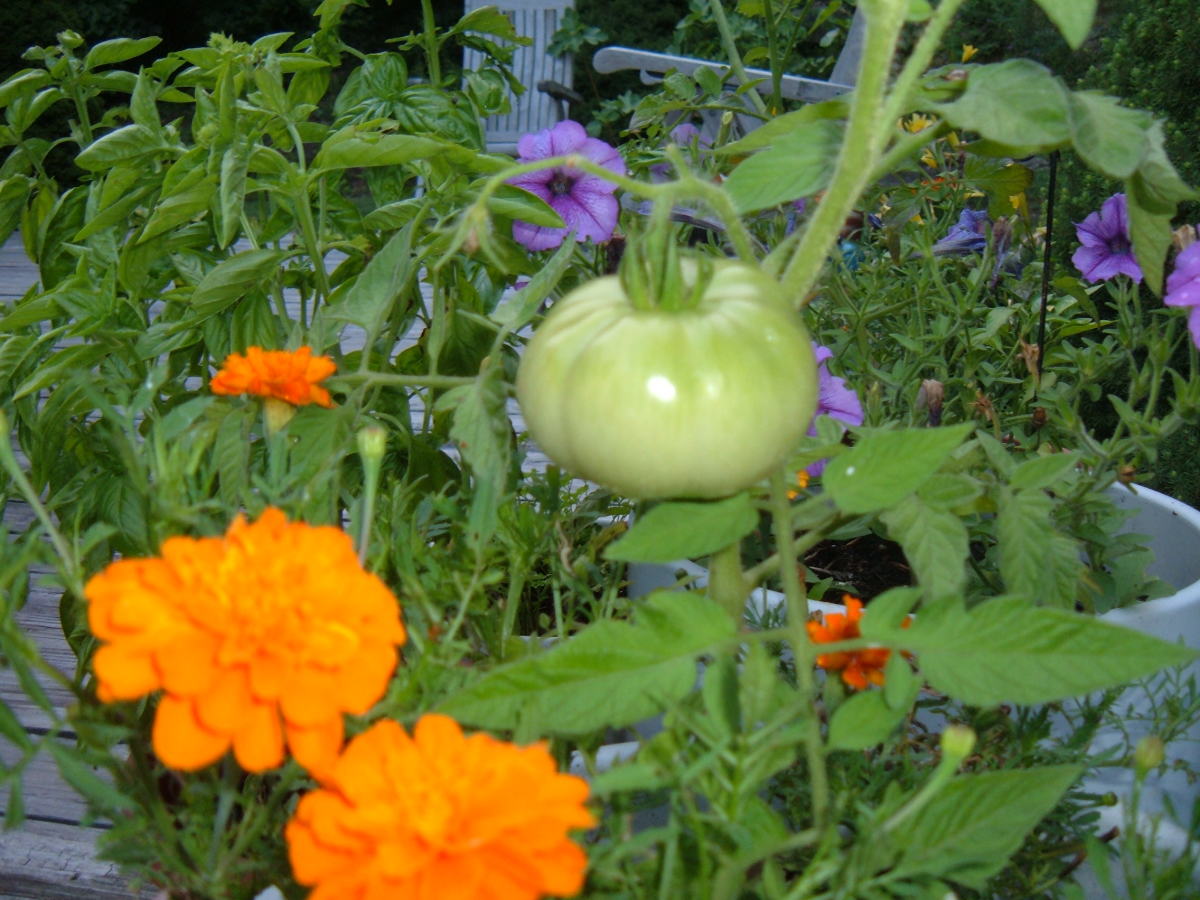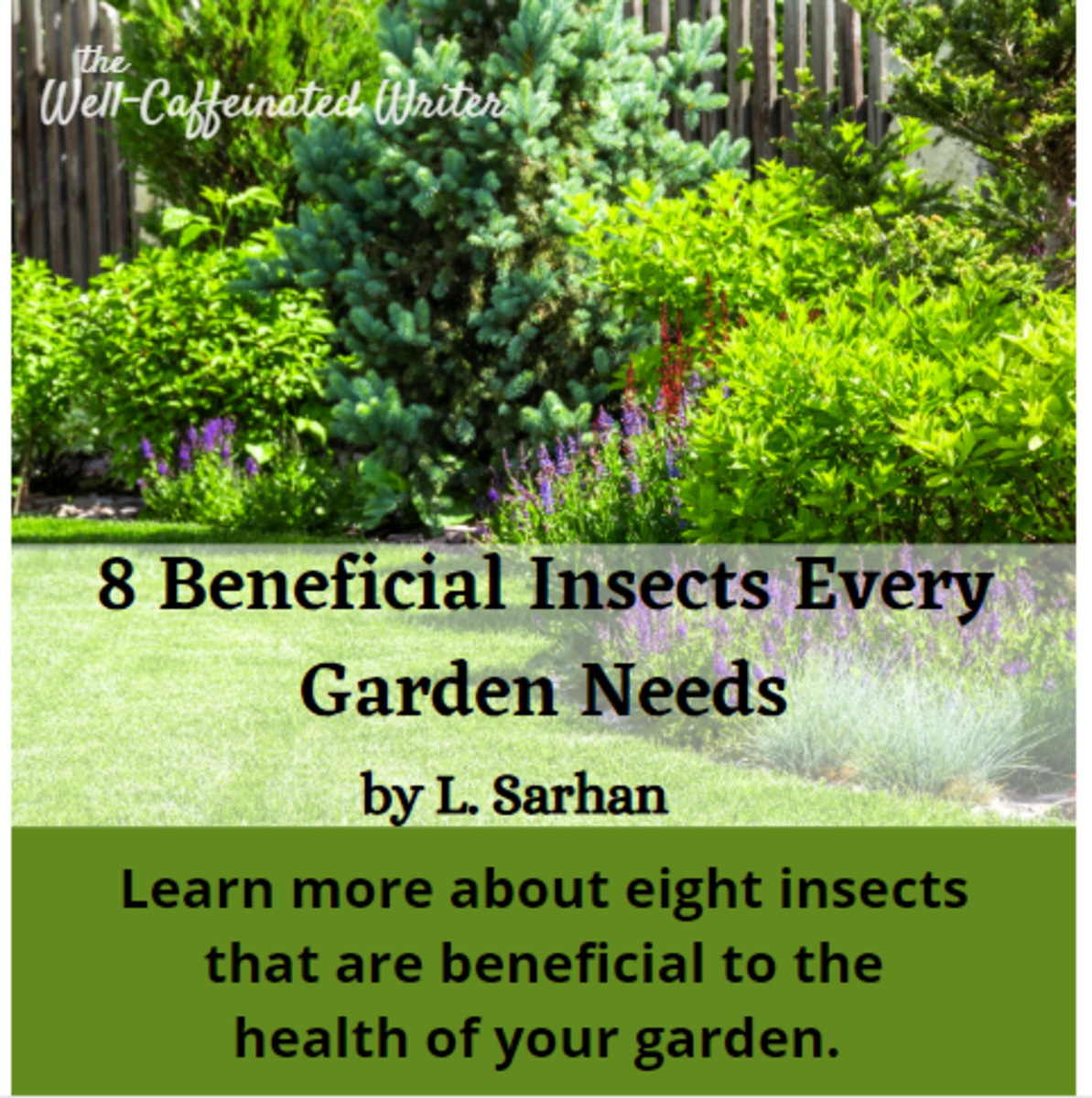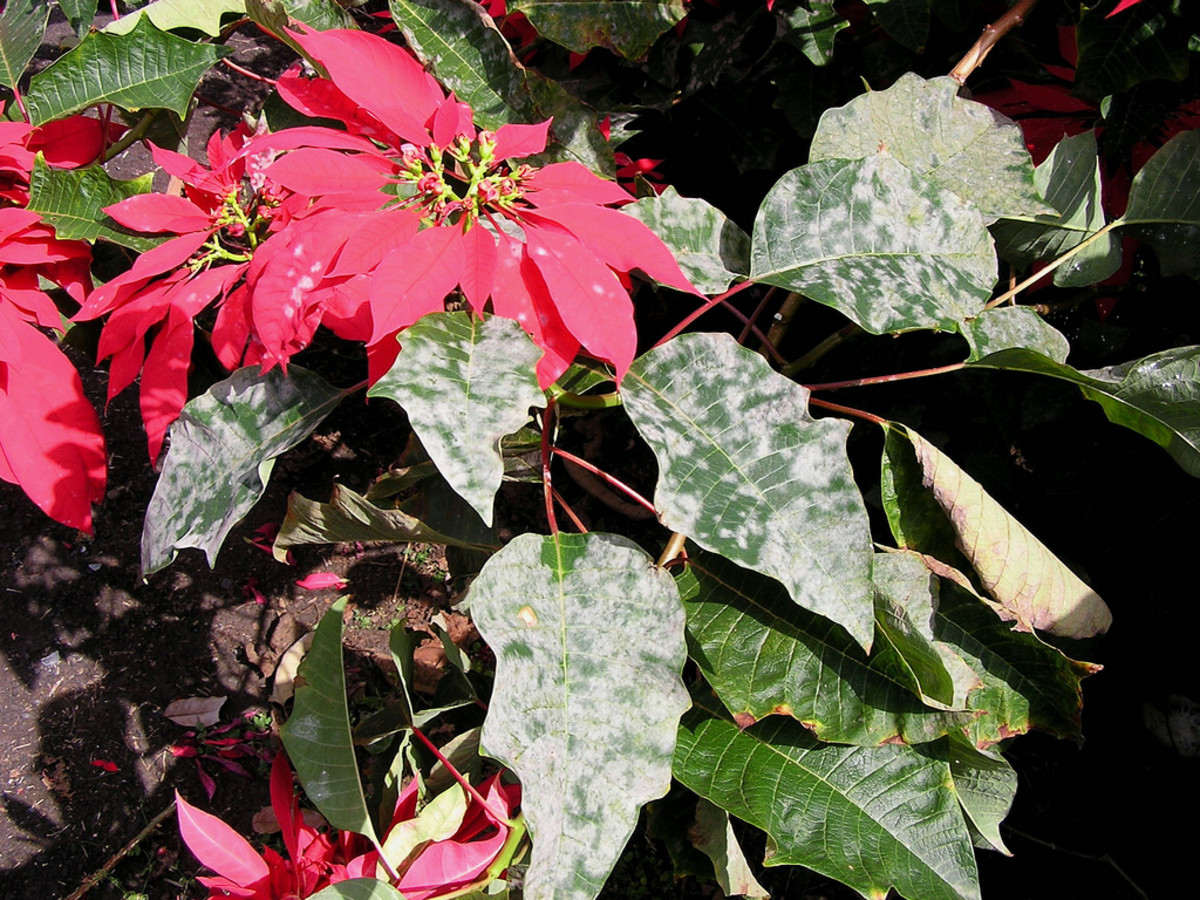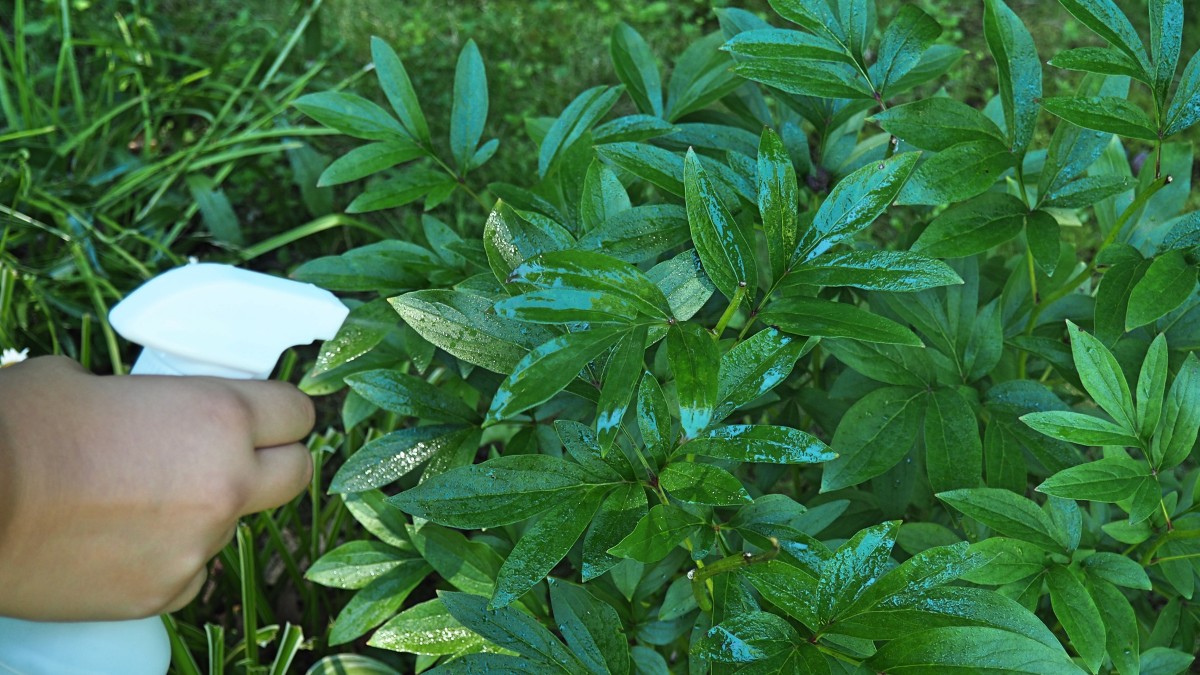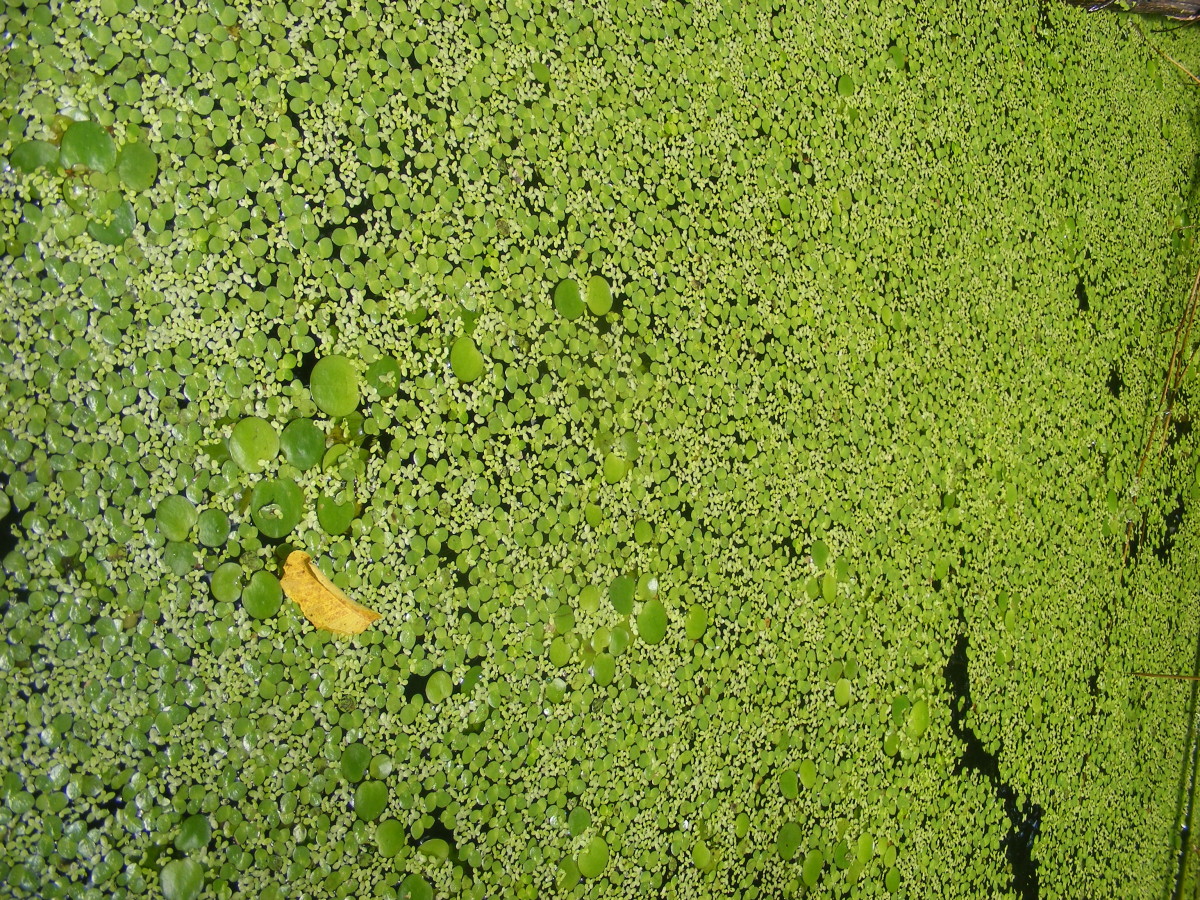- HubPages»
- Home and Garden»
- Gardening»
- Organic Gardening
Natural Garden Pest Management

First Line of Defense in Natural Garden Pest Management
A Healthy garden is not a bug-free garden. A healthy garden is one where there is a balance of power. In a healthy garden, predatory insects and other predatory animals keep the plant-eating insects in check. It is not wise to look at plant-eating insects as the enemy. Most people do not realize this, but plant-eating insects have a purpose and that is to eliminate the sick plants in favor of the strong. These insects are a warning sign that our gardens are not as healthy as they should be.
Therefore, our first line of defense in protecting our gardens from plant-eating insects is to create healthy soil. The healthiest soil is soil conditioned with organic materials. By composting our household and yard garbage and using the compost we produce, we actually prevent serious insect infestation. You can add manure, wood ash, grass clippings, mulch, seaweed, and coffee grounds as effective soil amendments.
In addition to adding compost to the soil, you can sprinkle organic kelp in the planting holes for transplants or in rows for planting seeds. Kelp tops the list for the following nutrients: calcium, potassium, magnesium, iron, and iodine, and is very high in sulfur. Sprinkling kelp in the bottom of a tomato-planting hole protects tomatoes from insects throughout the growing season.
Sufficient water, but not too much, also helps keeps plants healthy and keeps insects at bay.
Control Insects with Companion Planting
When I use a companion planting system, in other words, I plant plants that benefit one another. This system allows for natural barriers against pests. Companion planting also increases certain crop yields.
Scientific research indicates that companion planting does work. A trap crop is a crop planted to deter insects away from a neighboring crop. Other plants like legumes add nitrogen to the soil and provide nitrogen for nearby or future crops in the same area. In a three-sister’s garden, pole beans provide nitrogen for corn and squash.
Still, other plants, like the African marigold exudes chemicals to repel pests. Other plants provide physical benefits for neighboring plants. Here again, we can use the three sister’s gardens for our example. Corn becomes a trellis for pole beans and shade for squash. Many animals are hesitant to maneuver around the vines of the squash to get to the corn. A companion technique called nurse cropping uses tall or dense-canopied plants to protect plants that are more vulnerable by providing shade or windbreak.
Refugia are another form of companion planting that provides habitat for beneficial insects, and other arthropods, especially those predatory and parasitic species that help to keep pest populations in check. Plants that encourage bug predators include buckwheat, dill, borage, calendula, cosmos, yarrow, and sweet alyssum.
Beneficial Insects And Other Critters To Kill Herbivore Insects
In addition to drawing beneficial predatory insects to the garden, I can also purchase bugs that prey on these bugs you want to keep in check. Insects you can buy to benefit the garden include ladybugs, green lacewings, and praying mantis.
There is no guarantee that these bugs will stay in your garden, but if the herbivore insects (insects that eat your garden plants) are there, they are not likely to be far away.
There are other problems related to using beneficial insects in this manner. Back in the seventies and eighties, Asian ladybugs were introduced to this country, and this has caused problems in many areas of the US when these insects swarm and hibernate in man-made structures.
Encourage other animals to help keep plant-eating insects in check by building habitats for them. Inverted clay flowerpots for neighboring toads and bats and birdhouses are great additions for keeping unwanted insects to a limited number.
Pick Bugs By Hand To Keep Them From Getting Out Of Hand
Even though I try to do all that I can do to prevent plant eating from getting a foothold in my garden, there comes a time in every garden adventure when I need to do more than just pull weeds, water, and pick vegetables. The first thing I know I must do when a certain insect starts to take over the garden is to identify it. When I know what insect is trying to take over the garden, I can determine the method to use that will best help me get control of the garden again.
If I am dealing with a large insect that is easy to pick up with my fingers, I can manually remove the bugs by knocking the bugs, larvae, and eggs into a cup of water. These insects can be fed to the chickens (they love them). (If you have no chickens or other poultry, add some dish detergent into the cup and make sure that they do not escape back into the garden.) If I do not want to put them in water, you can also squeeze the bugs between two leaves.
Organic Pest Control
Organic Insecticides
If there are too many bugs to pick, or they are too small, I can spray them with organic sprays either commercially made or made from items found around the home. One type of spray is a spray made of cayenne pepper/garlic/water solution. (Do not spray if it is windy or raining. Also, do not spray just before picking your produce.) I make sure to spray the entire plant including the leaf undersides. After a rain, you will need to reapply the spray.
To Make the Natural Bug Spray, I mince the garlic, place it in a saucepan, and add generous amounts of red peppers to it. I then cover the mixture with water, bring the mixture to a boil, and remove it from the heat. I then let it cool overnight, strain it, and add some dish detergent. I use a spray bottle for small areas or use a backpack-type commercial sprayer for larger areas.
Sprays can also be made from citrus oil that kills bugs on contact.
I could use commercial organic insect preparations such as Neem or Rotenone in cases where home preparations are not effective. I realize that even though the product is organic, it kills not just the insects I want to kill but will also kill honeybees and predator insects. If I must use the product, I make sure to use it as instructed on the package.
Another solution to garden-wide protection is to use diatomaceous earth (DE). I make sure to use only food-grade DE. I do not use DE used for swimming pool filtration because this type of DE is not regulated to have less than one-tenth of one percent of crystalline silica, which is a potential carcinogen. I sprinkle DE around the garden from a shaker made of a mason jar with a lid in which holes are punched in it. I wear a filter mask while I am using DE. It will dry out unwanted bugs and insects because it can absorb one and a half times its weight in water. Light rain does not both DE. DE will keep working until heavy rain washes it away. Make liquid slurry and spray on damaged plants. DE will not kill earthworms, but to protect honeybees and ladybugs, do not spray DE on blooms of any kind.
Insect Barriers
I also use barriers to keep the insect away from my plants. Row covers are an excellent example of this. During flying bug season, I protect my plants from flying insects by covering them with row covers.
When I plant young transplants, I crush up eggshells and sprinkle them around my plants. The sharp edges help to deter slugs and cutworms from them. The shells will actually cut the slugs or cutworms and the attacker dies an application of diatomaceous earth also has the same effect. Bugs will not cross an eggshell or DE barrier. For added protection as well as added nutrition, I sprinkle a ring of kelp around the drip line of plants. Kelp’s physical protection against bugs is that it is salty and dries out the insects. The insects know this so they will not climb over it. Another way I can keep slugs out of the garden is by placing copper wires around my plants. Slugs will not climb over the copper. Another way to deter them is to sprinkle coffee grounds around threatened plants.
Insect Traps
Have you ever seen flypapers that are sticky to the touch? I sometimes buy sticky traps to trap insects of all kinds of bugs. These traps work well to reduce insect populations.
Watering my garden in the morning is an effective way for me to trap slugs. Slugs are attracted to damp soil so when the surface dries out during the day, so will the slugs. Another way I get rid of slugs is by placing boards around the garden in the evening, then in the morning I turn over the boards and feed the slugs that sought refuge under the boards to the chickens. The most commonly known trap for slugs, as everyone knows, is a shallow container of beer above the soil in the garden.
You Win Some You Lose Some Garden Plants To Insects
The skills of organic gardening involved in insect pest control will not completely eliminate plant-eating insects, but you and your garden will definitely be healthier than if you had not gone the organic route and the healthier your garden, the healthier you are as well.
This content is accurate and true to the best of the author’s knowledge and is not meant to substitute for formal and individualized advice from a qualified professional.
© 2013 Cygnet Brown

